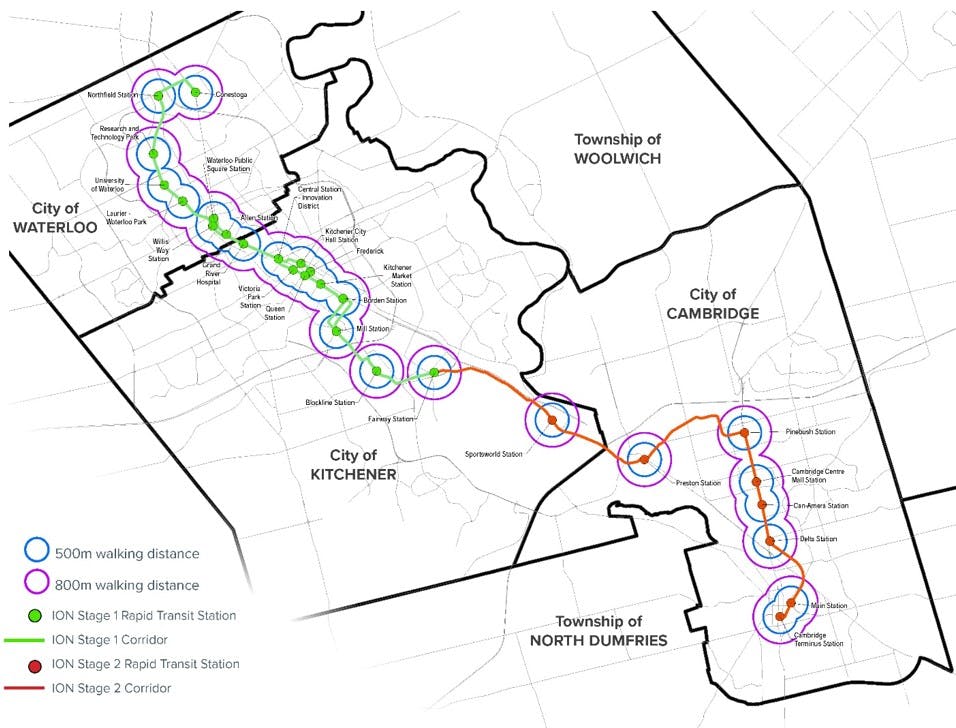Exploring Inclusionary Zoning to Support Affordable Housing

Affordable housing can be made available in a wide range of housing types and can be provided by the private, public or not-for-profit sectors. Affordable housing can be comprised of subsidized housing or market rate housing, and it can apply to housing that is rented or owned.
The cities of Kitchener, Waterloo and Cambridge and the Region of Waterloo are looking at new approaches to deliver affordable units in projects that are built by private developers. One tool that can support affordable units within new housing stock is called inclusionary zoning.
Inclusionary zoning allows cities to require private developers to include a certain percentage of affordable units within new, multi-unit housing developments. The tool can be applied to areas around ION stations (called Protected Major Transit Station Areas, see map) where more and denser housing is planned.
To be successful, an inclusionary zoning program needs to strike a balance between the various policy parameters, such as how many affordable units are required and how affordable the units are.
The cities are also exploring ways to ensure that any inclusionary zoning program is financially sustainable and can operate without significant municipal subsidy, though there may be instances where incentives may be needed.
How Does Inclusionary Zoning Work?
Inclusionary zoning allows cities to require private developers to include a certain percentage of affordable units within new, multi-unit housing developments.
The Waterloo region is expected to grow primarily along the ION transit corridor. There’s an opportunity for some of the land value generated through this growth to be directed toward new affordable units.
Because inclusionary zoning programs result in lower revenues for developers through lower rents or sales prices than would otherwise be the case, programs have to be carefully designed to ensure development of new housing continues to be viable to support the dual objectives of increasing housing stock overall as well as securing guaranteed affordable housing.
Other Considerations and Limitations of Inclusionary Zoning
Inclusionary zoning can complement other affordable housing initiatives, such as Region of Waterloo community housing and not-for-profit affordable housing, by providing an ongoing, sustainable supply of affordable housing that is not reliant on federal and provincial government grants. Despite its potential to leverage private investment for affordable housing, inclusionary zoning is subject to a number of regulatory and financial constraints that limit its ability to address the full range of affordable housing needs. These limitations include:
- Location: Provincial regulations limit inclusionary zoning to Major Transit Station Areas
- Scale of development: Provincial regulations limit inclusionary zoning to residential developments of 10 units or more
- Depth of affordability: Research suggests that inclusionary zoning works well for creating units for households with moderate incomes. For example, those that earn too much to be eligible for community (government subsidized) housing, but not enough to afford market rents/prices.
How you can contribute
Before the Region and municipalities proceed with the development of a draft program, they want to gather your feedback on the relative importance of the components that will make up the program. Opportunities to contribute will be posted to this page as they arise.
To get email notifications about this project, subscribe for updates by using the Stay Informed ‘Subscribe’ button.







